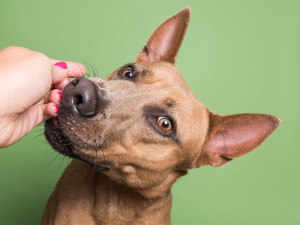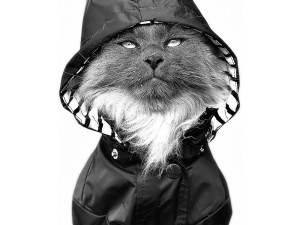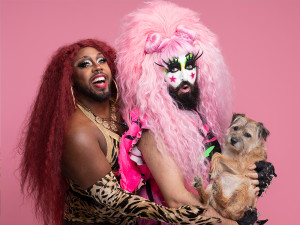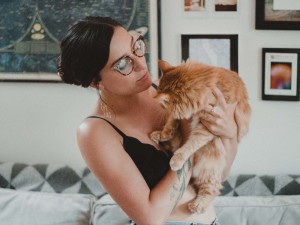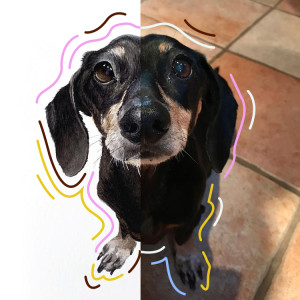How to Photograph Your Pet Like a Pro
The world needs cute pet pics. Here are five tips to help you go from amateur to Annie Leibovitz.
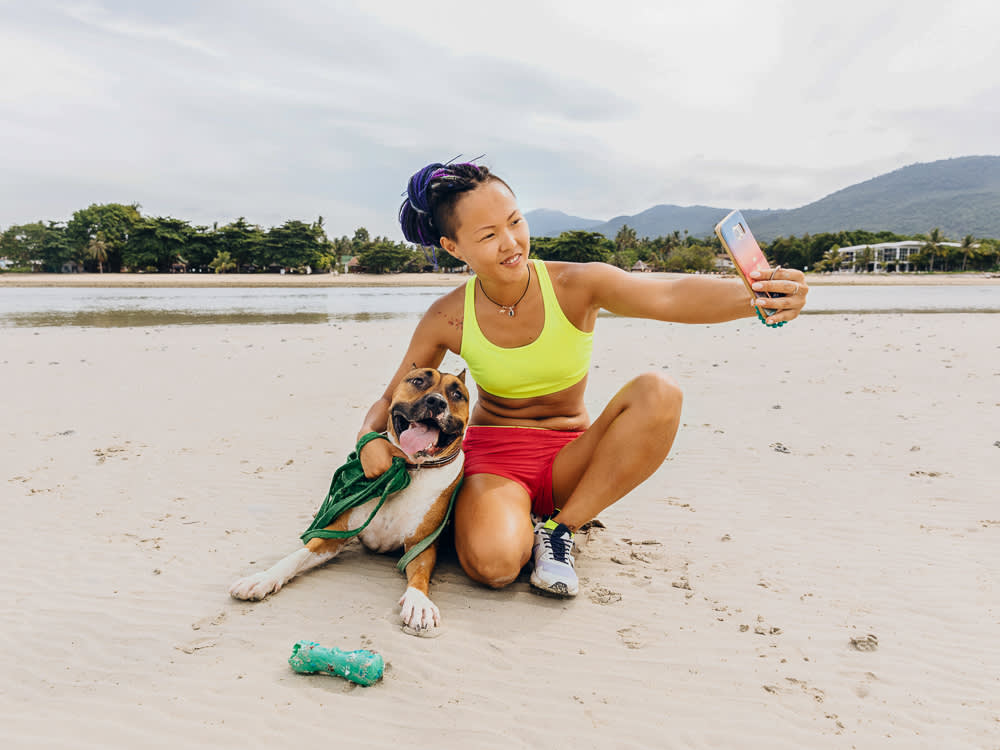
Share Article
Thanks to the likes of Gerrard Gethingsopens in a new tab, Elke Vogelsangopens in a new tab, and Seth Casteelopens in a new tab pet photography has been elevated to an art form. Sure, your portrait-mode pictures may not win you the National Geographic Photo Contest, but you don’t need to be a pro to get your pet ready for their close-up. When artist, rescue advocate, and Kinship Collective member Sophie Gamandopens in a new tab began shooting her iconic Pit Bull Flower Poweropens in a new tab series, I assisted by handling the shelter dogs as she captured their best “Adopt Me” mugs. In between being jumped, slobbered, and peed on by dogs who didn’t know sit from stay, I picked up a few tips and tricks for getting the money shot.
1. Location Scout
If you’re reading this, then you probably don’t have a professionally lit studio at your disposal. If your subject is a dog, natural lighting is the next best thing — the golden hour shortly after sunrise to be exact. Your dog may be more alert and animated outdoors, which is great for capturing their personality, but be sure to scout a setting without distractions like other dogs or squirrels.

littleKin™ is Kinship’s home just for puppy and kitten parents. Bop over to check out expert advice, new pet tools, and special deals—all curated for your newest family member.
opens in a new tabYour cat, on the other hand, might not be as cool with an on-location shoot. They’ll make for more cooperative “talent” where they are most comfortable — ideally where there is bright light like beside a windowopens in a new tab. And consider the background — it should be neutral and clutter-free. A solid color wall works well, or you can find seamless paper backdrops at art stores.
Black animals are the exception to this rule. They are notoriously challenging to shoot as their dark, monochromatic fur overshadows their features and bright light can backfire, resulting in a “color cast.” Clouds can act like a natural diffuser so a softly lit, shaded area is ideal for bringing out the best side of your black cat or dog.
2. Chill Them Out
But not so much that your model falls asleep on the job. Walk your dog or play with your cat to burn energy so they don’t get restless when you’re trying to get them to sit for their portrait. This will also give them — dogs at least — a chance to relieve themselves and not interrupt the shoot with a potty break. If your pet has no chill, try calming CBD treats or catnipopens in a new tab (if it doesn’t have the opposite effect on your cat).
3. Set Up Your Camera (App)
First, turn off the flash — it can startle an animal, not to mention, cast a diabolical glare in their eyes. Then check your camera app to ensure it’s set to taking high-resolution images. Portrait mode is designed to subtly blur a background and sharpen the focus on the subject. Burst mode is another handy feature, which snaps dozens of shots in rapid succession, giving you the best chance of capturing the hot second your pet makes eye contact. (If you don’t have an iPhone, you can always “fix it in post” and create similar effects with basic photo editing tools.)
4. Pose Your Pet
If you can wrangle a friend to help (who wouldn’t want to PA a pet photoshoot?) teamwork will make the process infinitely easier. An extra set of hands can hold or keep your pet engaged while you focus on getting the shot. If you’re on your own, ask your dog to sit or place your cat where you want them — facing the camera and the light — and hope they stay put. Slowly back away and drop down to their eye level. If you have a Velcro dog or cat you’ll probably need to stay close by; in that case, fashion a makeshift tripod and set your camera’s shutter timer. Either way, let your pet sniff the spot and make themselves comfortable before starting to shoot.
5. Get the Shot
With the exception of William Wegman’s Weimaranersopens in a new tab, animal subjects don’t take artistic direction too well, so you’ll need to get (and keep) their attention. This is where tools come in: high-value treats, squeaky toys, a shrill voice. Break out something that’s new to them so they can’t keep their eyes off it. If you have a food-motivated dog hold the treat — and their gaze — just above your head. Up the ante by making a funny noise, cueing a classic head tilt. A squeaky toy has the same desired result but squeak at your own risk (remember, you’re on your dog’s level). Cats are less command-oriented, so if an old-school Pssst doesn’t do the trick, a cat wand should catch their eye. That moment of contemplation pre-pounce could mean the money shot.
If you want to recreate Gamand’s goofy tongue-waggingopens in a new tab look, put a dab of peanut butter on your dog’s nose. Want your dog to wave “hiopens in a new tab ”? Ask them to “shake” and edit your hand out later. Finally, don’t give up when your dog gets sleepy — yawnsopens in a new tab look like hearty laughs on camera.
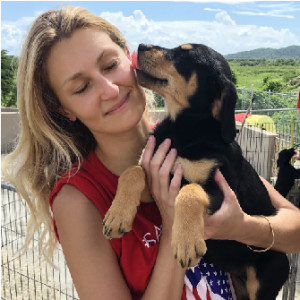
Samantha Gurrie
Samantha Gurrie is Kinship’s Editor-in-Chief. She was previously the senior editor at NYLON magazine, co-publisher of Four&Sons, and director at Puerto Rican dog rescue The Sato Project. She lives in L.A. with her husband and rescued Pit Bull Midnight.
Related articles
![Gerrard Gethings]() opens in a new tab
opens in a new tabCats, Dogs, and Drag Queens — Through the Lens of Gerrard Gethings
The photographer talks about his Border Terrier assistant, the likeness of people and their pets, and going behind the scenes with drag queens.
![Bridget Badore holding her cat]() opens in a new tab
opens in a new tabPhotographer Bridget Badore & Queso Share Zodiac Signs, Personal Spaces, Lots of Feelings
“When I bring out my camera she tries to fight me, which is a shame because she really does know how to find her light.”
![customized pet portrait gift guide]() opens in a new tab
opens in a new tab16 Customized Gifts For People Wanting To See More Of Their Pet
Nothing beats a thoughtful gift (and nothing evokes oohs and awws like our beloved pets).
![Black cat sitting on top of a leather sofa staring up at an abstract painting in a modern living room]() opens in a new tab
opens in a new tabCreative Interiors and the Cats Who Call Them Home
Talking to Vogue Living photographer Paul Barbera about his new feline-focused interior design book, Where They Purr.
![Photo by Heike Schneider-Matzigkeit]() opens in a new tab
opens in a new tabI’m with the Band: Heike Schneider-Matzigkeit Photographs Rock Stars & Dogs
The Berlin-based artist has shot Amy Winehouse and Iggy Pop. Her new gig is taking portraits of creatives and their pets.
